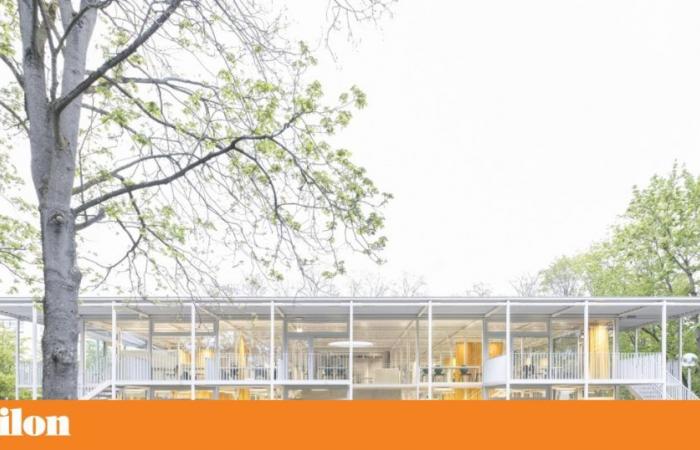The C Pavilionampus of the Technical University of Brunswick, in Germany, designed by architects Gustav Düsing and Max Hacke, is the big winner of the 2024 Mies van der Rohe Architecture Prize. “The building was awarded for its ability to challenge limitations and prejudices about sustainability, creating a welcoming and playful environment for study, collaboration and community gathering through a carefully detailed structure”, says the statement from the European Union and Mies van der Rohe Foundation contemporary architecture awards.
In the Emerging Architecture category, which also included the integrated restoration of the square and tourist office in Piódão, a village in the municipality of Arganil, a project by architects João Branco and Paula del Rio from the studio Branco Del Rio, the Gabriel García Márquez Library was the winner. , in Barcelona, from studio SUMA, founded by Elena Orte and Guillermo Sevillano.
The jury highlighted that the Library contributed “to the transformation of the neighborhood [Sant Martí de Provençals]opening up as a new exterior and interior public space.” With its wooden structure, “it unfolds into a rich sequence of monumental spaces, but also domestic spaces that welcome neighbors and citizens, providing them with comfortable environments for learning, teamwork and community involvement.”
The announcement was made this Thursday, in Brussels, by the Director of Culture, Creativity and Sport of the European Commission, George Hausler, together with Fréderic Druot, president of the jury for this 2024 edition. “After selecting the five finalists for the Architecture Prize, the jury carried out a long deliberation to choose the winning work”, says the statement, adding that the debate was lively and with divergent positions.
In turn, the commissioner responsible for Innovation, Research, Culture, Education and Youth, Iliana Ivanova, highlighted that the winning works “reflect the principles of the New European Bauhaus, bringing the ecological transition to everyday life and people’s living spaces .”
The two award-winning projects were chosen from an initial group of 362 nominated works. The jury also considered that the duo of German architects set out to design this pavilion in campus from the university, a commission from the Technical University of Brunswick, with “a clear architectural idea, which he reformulated and pushed to the limit”. Much more than a building, they see in the winning project “a versatile system that combines technological innovations with a flexible and reusable principle.” Gustav Düsing and Max Hacke founded their studio in 2015 and won the competition for the construction of this pavilion in 2017.
Opened in 2022, the Gabriel García Márquez Libraryin Barcelona, is a success story among the inhabitants of the neighborhoods of San Marti, La Verneda It is There Stick. “With extreme attention to detail, the authors of the architectural project meticulously examined and promoted the library’s program”, also considered the jury of the Mies van give Rohe Emergent. Last year, this Catalan library had already received the award for best Public Library 2023 from the International Federation of Library Associations and Institutions (IFLA). Elena Orte It is Guillermo Sevillano founded the studio SUMA Arquitectura in 2005, having won the competition promoted by the municipality for the construction of the library in 2015.
The awards ceremony is scheduled for May 14th, at the Mies van der Rohe Pavilion, in Barcelona. During that day, in addition to an exhibition that will showcase all the works nominated for this edition, there will be lectures and debates with the architects of the winning and finalist works.
Tags: Mies van der Rohe Prize University Brunswick Pavilion Architecture
--





